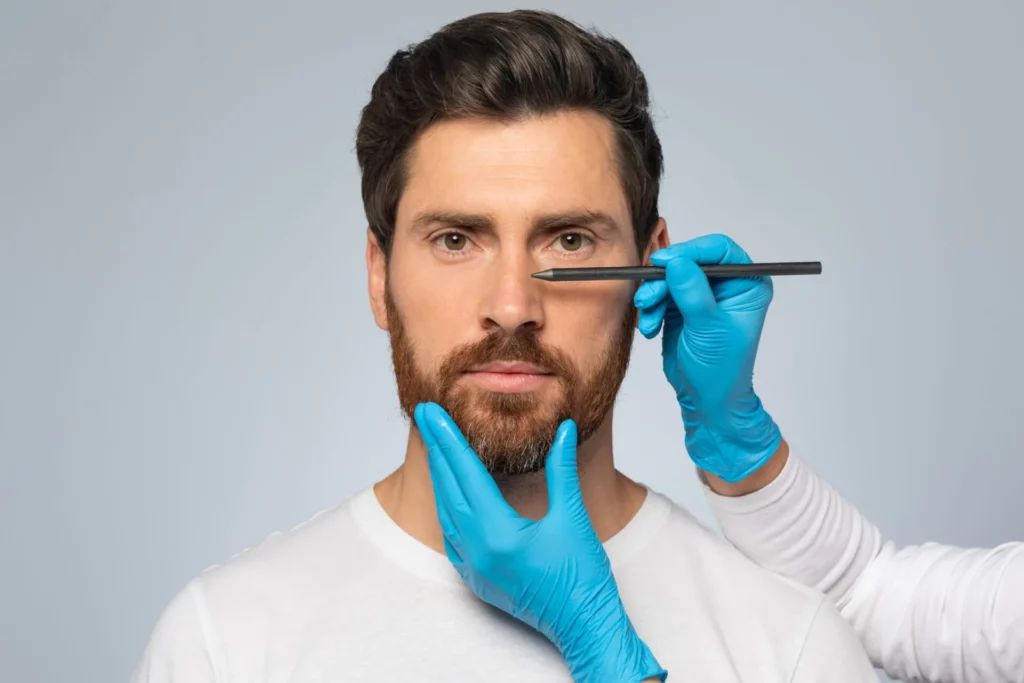-
OUR Rhinoplasty techniquesCosmeticFunctional

Once your procedure is complete, you’ll spend some time in a recovery area as the anesthesia wears off. It’s normal to feel groggy, and you might experience some congestion, a mild headache, or pressure in the nasal area. You’ll likely have a splint on your nose to support its new shape and possibly internal packing or soft splints to stabilize the septum.
For the first day or two, most patients feel tired and should plan to rest with their head elevated to help alleviate symptoms. Having a trusted friend or family member with you for the ride home and for the first 24 hours is strongly recommended.The most common side effects after male rhinoplasty include:
Swelling is a natural part of recovery after a nose job. Here’s what you can expect:
Immediate swelling: Peaks in the first 48 hours after surgery.
Rapid improvement: Significant swelling and bruising fade within the first 2 weeks.
Gradual resolution: Subtle swelling, especially at the tip, decreases over several months.
For most men, the majority of swelling resolves within two to four weeks. However, some degree of swelling—mostly noticeable to you rather than others—can persist, particularly at the nasal tip, for up to 6–12 months after surgery.
Desk jobs or remote work: Many men return to work within 7–10 days, once splints are removed and bruising has subsided.
Physical jobs or those involving heavy lifting: Wait at least two to three weeks, or as advised.
Exercise: Light activity (like walking) can usually resume after one week, while vigorous exercise or contact sports should wait at least four to six weeks.
If you’re considering facial plastic surgery to correct a droopy nasal tip, a crooked bridge, or a deviated nasal septum, we invite you to schedule a personalized consultation with Dr. Zarrabi. During your visit, he will carefully review your medical history, assess your goals, and explain what to expect from this outpatient procedure. As an experienced surgeon, Dr. Zarrabi prioritizes natural-looking results and patient safety, ensuring every step of the process is tailored to your unique needs.
In summary, most men can expect the major phase of male nose job recovery time to last one to two weeks, with most swelling and bruising resolving during this period. However, full healing, final results, and refinement of your new nose shape can take up to a year to achieve. Following Dr. Zarrabi’s specific aftercare instructions, prioritizing healthy habits, and choosing advanced techniques like ultrasonic rhinoplasty can all help optimize your outcome and make your recovery as smooth as possible.
For more information, visit our male rhinoplasty page or explore our practice.